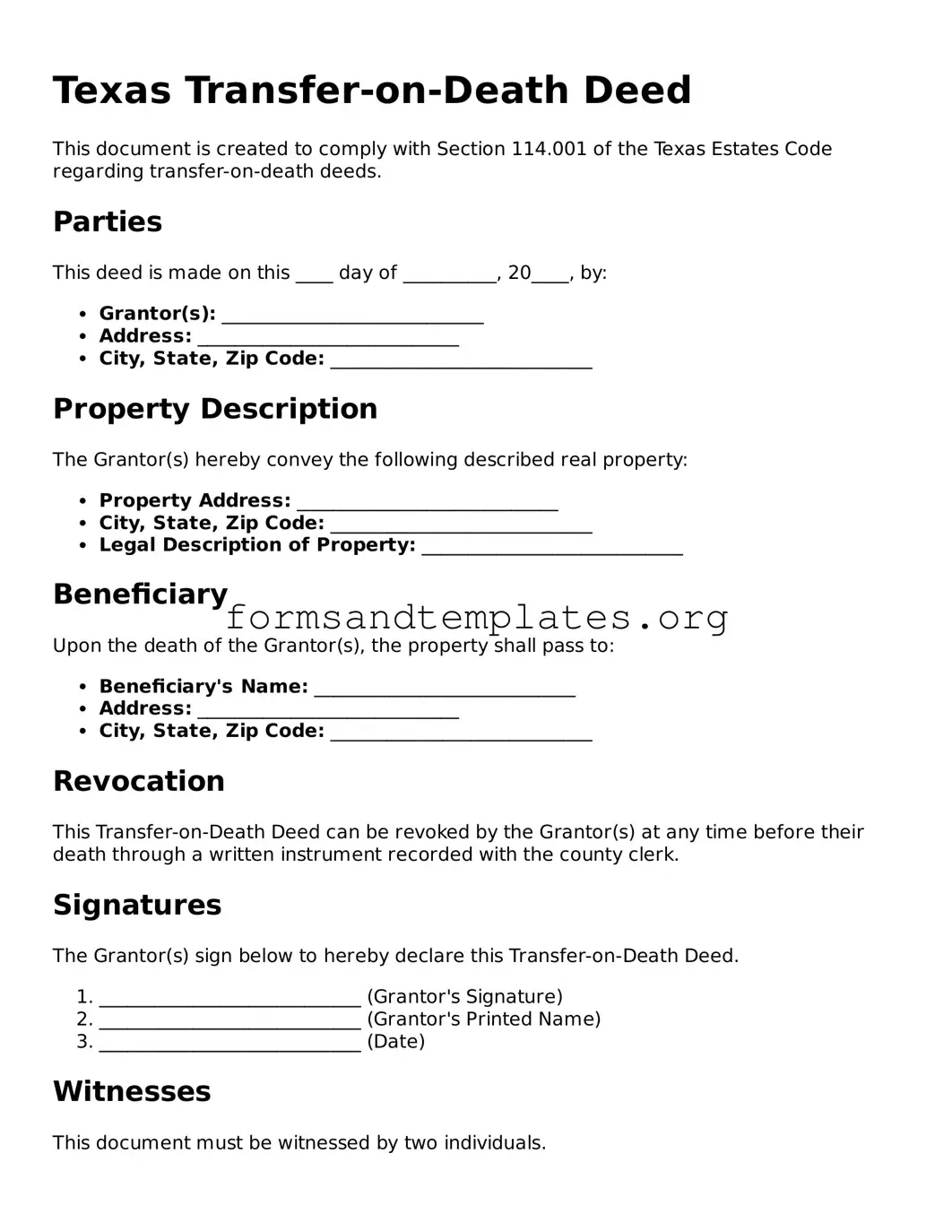Texas Transfer-on-Death Deed
This document is created to comply with Section 114.001 of the Texas Estates Code regarding transfer-on-death deeds.
Parties
This deed is made on this ____ day of __________, 20____, by:
- Grantor(s): ____________________________
- Address: ____________________________
- City, State, Zip Code: ____________________________
Property Description
The Grantor(s) hereby convey the following described real property:
- Property Address: ____________________________
- City, State, Zip Code: ____________________________
- Legal Description of Property: ____________________________
Beneficiary
Upon the death of the Grantor(s), the property shall pass to:
- Beneficiary's Name: ____________________________
- Address: ____________________________
- City, State, Zip Code: ____________________________
Revocation
This Transfer-on-Death Deed can be revoked by the Grantor(s) at any time before their death through a written instrument recorded with the county clerk.
Signatures
The Grantor(s) sign below to hereby declare this Transfer-on-Death Deed.
- ____________________________ (Grantor's Signature)
- ____________________________ (Grantor's Printed Name)
- ____________________________ (Date)
Witnesses
This document must be witnessed by two individuals.
- ____________________________ (Witness 1 Signature)
- ____________________________ (Witness 2 Signature)
Notary Acknowledgment
State of Texas
County of ______________________
On this ____ day of __________, 20____, before me appeared the Grantor(s) and the witnesses, known or identified to me to be the persons whose names are subscribed to this document, and acknowledged that they executed the same for the purposes and consideration therein expressed.
____________________________ (Notary Public Signature)
____________________________ (Notary Public Printed Name)
My commission expires: ____________________________
